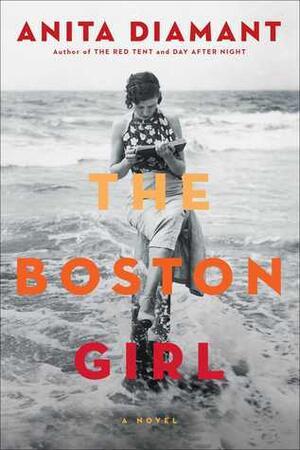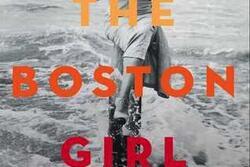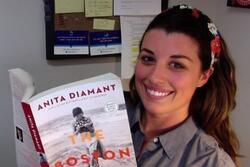Q&A with Anita Diamant
Welcome to the JWA Book Club! We are excited to gather today to discuss Anita Diamant's new novel, The Boston Girl.
When taking part in our comment-based discussion below, remember to hit "Show Reply" and "Show New Comments" to see the full conversation! Anita Diamant will be responding to questions mainly through the "reply" feature.







In reply to <p>Etta. I gotta get some of by Anita Diamant
You bet!
I was 10 when my last grandparent died so I clearly had no way to interview them for past life information. as much as your book Anita, is fiction, it did help me to imagine life in Boston "way back when".
In reply to <p>I was 10 when my last by IlanaB
Ilana, your comment is making me try to imagine the same amounts of snow they've had in Boston these past couple of weeks in Addie's time. How would they have handled that?
In reply to <p>Ilana, your comment is by Erika Dreifus
I saw some photos, though not of snow as deep as this. The streets in those images are deserted
When I first read the book I assumed that Addie was a unique figure, so independent. Perhaps not. Anita, do you think, through your research, that Addie was "representative" of young women living in her situation, trying to make their way at that time?
In reply to <p>When I first read the book by sukir49md
I created Addie to be a person of her one,"a unique figure." I don't aim for "representative" because that would make her an idea rather than a person. But I was amazed to read about the kinds of choices individual women did make at the time. And while Addie is independent, she actually lives a fairly unremarkable life.
In reply to <p>When I first read the book by sukir49md
One of the unique things I have learned about young women at this time was that their roles as workers allowed them (and I think, encouraged them to develop) a new sense of freedom and independence that many did not have access to in the old country. In addition to making money, women learned to be public-facing leaders, they build strong friendships, they courted differently, and they were able to try on many different kinds of identities. JWA has an awesome picture from a magazine from around this time period called "The Masses." I think it captures the spirit of these women so perfectly. Check it out: http://jwa.org/sites/jwa.org/f...
In reply to <p>One of the unique things I by Etta King
LOVE this!
In reply to <p>One of the unique things I by Etta King
I love this, too. the teens and 20s were a time of huge changes for girls and women.We get flxated on flappers of the F Scott Fitzgerald mode. But the "new woman" was another model.
Why is there no video feed?
In reply to <p>Why is there no video feed by MiriamEichler
no video today Miriam, just a discussion
I haven't had an opportunity to read the book yet, but I'm dying to see how this virtual book club discussion works!
In reply to <p>I haven't had an by Heidi Rabinowitz
welcome, Heidi!
In reply to <p>I haven't had an by Heidi Rabinowitz
Hi, Heidi!
In reply to <p>I haven't had an by Heidi Rabinowitz
Hi Heidi. I also wanted to see how this works.
Anita, can you tell us more about Rockport Lodge, which was a real place? It sounds amazing.
In reply to <p>Anita, can you tell us by Tara M.
Actually it was Rockport Lodge that inspired the book. It was founded in 1906 to give girls a taste of recreation and leisure. It was extremely inexpensive. I think $5 for a week at the start, including three meals, activities, experiences. Some girls like the ones I describe were immigrants but others included girls who belonged to girl's clubs (a big movement in the day) who were in the work force.
In reply to <p>Actually it was Rockport by Anita Diamant
That's amazing. Does the building still stand? Is it a museum now?
In reply to <p>That's amazing. Does the by Tara M.
Rockport Lodge started as a farmhouse, built in the mid-1880s. The Lodge closed for good in 2001. there was talk of using the land for subsidized housing for women and children, but the neighborhood said no. The land was sold and the proceeds donated to a local nonprofit that serves women and families
In reply to <p>Rockport Lodge started as by Anita Diamant
The Hillwood Museum (Marjorie Merriweather Post's home) in Washington DC is a place I visit often. During WWII Ms Post put all of her jewelry (millions of $$ worth) in a vault feeling it inappropriate to wear this expensive pieces, and the $$ she saved by insuring the jewelry was used to pay for establishing and running (believe it or not) upwards of 25 homes in NYC for young women, especially those living on their own with no family. a little known fact, perhaps, that could have housed some of those in Addie's position without family.
In reply to <p>The Hillwood Museum by sukir49md
How interesting. I actually attended college on Long Island on a campus that was Marjorie Merriweather Post's childhood home. This tidbit was not publicly known about her back inthe 60's.
In reply to <p>The Hillwood Museum by sukir49md
Helen Storrow was a friend to the "real" Ediths. She supported the settlement house and the pottery and bought a precursor to Rockport Lodge-- a rougher shack also on the North Shore. She also brought the girl scouts to America. Storrrow Drive is named after her husband. A rich woman from an anti-slavery and suffrage family.
Have you started?
In reply to <p>Have you started?</p> by MiriamEichler
yes, hello Miriam! Make sure to hit "see new comments"
I think the depth of this goes beyond really listening to our grandparents, but the story, which is history, and remembering that so much that we deal with, those who came before us dealth with in their life context--depression, suicide, death of loved ones too young, finding community and more
I am here.
Really enjoyed the book and read it a 2nd time after meeting Anita at 6th and I Synagogue in DC. I hope that this books sparks those with grrandmothers to do oral interviews with them to learn more about their lives and save family histories.
In reply to <p>Really enjoyed the book by sukir49md
I agree...it certainly made me want to interview my grandmother
In reply to <p>I agree...it certainly by Tara M.
It made me glad that I had the chance to do some of that work.
In reply to <p>Really enjoyed the book by sukir49md
Thanks. It was such a great evening at Sixth and I
Hi, all. So glad I finished the book in time to participate!
also testing
Are you going to provide rules of the road?
In reply to <p>Are you going to provide by Ricki Henschel
Rules of the road: please be respectful of everyone and know that we are all just getting the hang of this system! Other than that, ask away :)
In reply to <p>Rules of the road: please by Tara M.
Good rules! ;-)
I'll kick off the conversation with my question: A lot of young women fantasize about getting to Ì¢âÂÒinterviewÌ¢âÂå their grandmother who has passed away, as AddieÌ¢âÂã¢s granddaughter does. Did you ever get the chance to speak you your grandmother(s) about their lives?
In reply to <p>I'll kick off the by Tara M.
No, I'm afraid not. My grandmothers were very "old world." Children were to be seen and not heard. I aspire to be a grandmother like Addie.. someday. No rush
In reply to <p>I'll kick off the by Tara M.
My maternal grandmother passed away when I was in 10th grade. I was still too young to really appreciate being able to hear her story. My paternal grandmother is turning 90 next month and I have made it a point to go to her house and every time I am there ask questions. I have also started digitizing her pictures and documents and papers and these have been incredible story starters. I found out that my grandmother was a chemist before she became a sunday school teacher. Who knew?
In reply to <p>My maternal grandmother by Etta King
A chemist! Must be some great stories there about where she studied and why/when/how she left the field.
In reply to <p>My maternal grandmother by Etta King
That is awesome, about your paternal grandmother.
In reply to <p>My maternal grandmother by Etta King
What a wonderful story, Etta. My father passed away last year at age 92 and for the last 6 years of his life every time I visited him I took notes on my laptop and got a great family history which I am now researching.
In reply to <p>What a wonderful story, by sukir49md
Very cool!
HELLO EVERYONE! Welcome! And a special welcome to Anita Diamant.
I am here. Thanks to everyone for joining in.
just testing to see if I am a participant
In reply to <p>just testing to see if I by ellentilman
yes, hello!
(I thought there was going to be a question to being discussion here, but I see none. So, I'll just start...) The video posted here says Diamant wrote this book about the Rockport Lodge and how that expanded Addie Baum's view of the world and friendships for life. But I am wondering if it was written with some sort of social studies curriculum in mind: The book touches on major historical points -- immigration challenges and assimilation, health issues and shell-shock, oppression of women and labor issues, German versus other Ashkenazi Jewish observances, and white/Jewish flight from cities -- without presenting anything too challenging. In fact, it strikes me as very like an "American Girl" story for slightly older readers, i.e., really just mean to illustrate a time period, not to tell a particularly character-focused story.
The most interesting thing to me was Addie's discovering the anti-child-labor movement when she meets her soon-to-be-husband and how problematic that must have been for someone whose family survival depended on funds from the garment industry. Prior to that we hear very little about conditions and struggles in the factory, especially as Addie and her sister work in offices. But this is tossed off, as "yeah, I thought about my brother-in-law's company," but it's not posed as any kind of conflict in the family: Wasn't Levine upset to have a brother-in-law who was threatening his livelihood and the industry? There must have been some tension there, but it's not explored in the interview with the granddaughter. So, if Anita Diamant is to respond: I'd really like to know about this choice to glide right by what I'm guessing would have been at least as worthy of comment as the issue about which shul to join?
Perhaps because we only have what Addie told her granddaughter, we get only the most obvious (and understandable) anger: lack of recognition for women in the early part of the 20th Century, struggles in the newsroom, racial policies that kept some stories only in the Nation. What would the story have been like, had she been speaking to a peer? to someone in the labor movement? to a young organizer?
In reply to <p>(I thought there was going by Virginia A. Spatz
Hi Virginia! Our discussion doesn't kick off until noon eastern time, but we'll see you then!
In reply to <p>Hi Virginia! Our by Guest
Hi Tara just making sure it works. Am I doing this right?
In reply to <p>Hi Tara just making sure by Anita Diamant
yes, hi Anita!